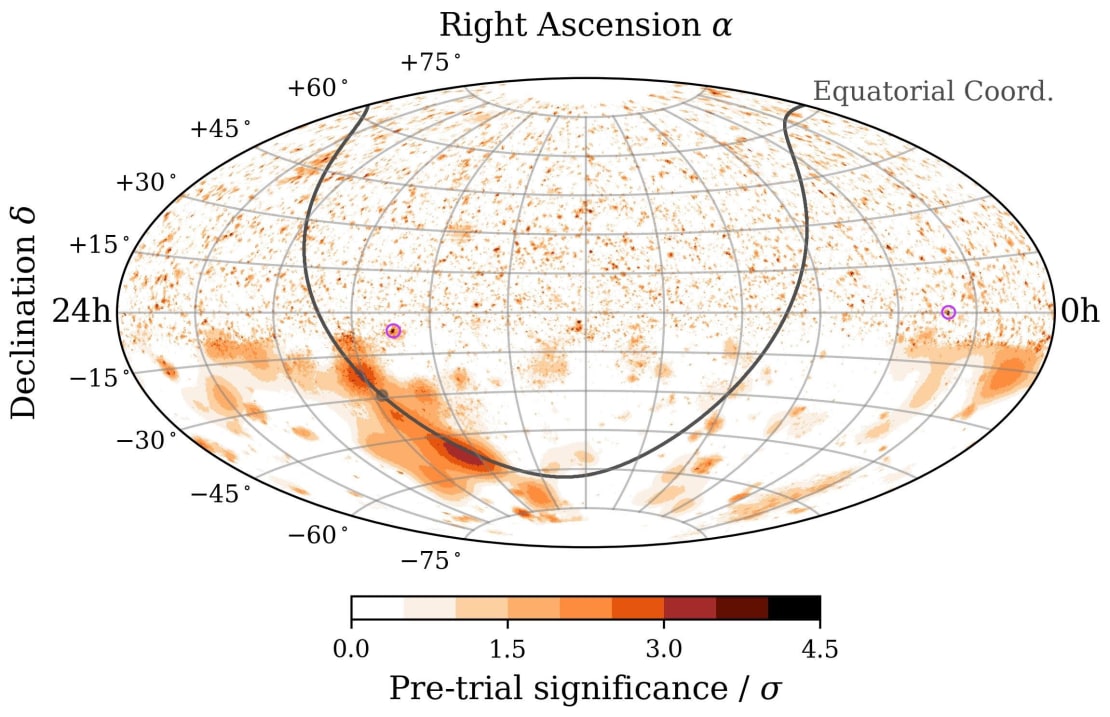The origins of cosmic rays—and the astrophysical sources responsible for producing and accelerating them—remain an open question in science. However, high-energy neutrinos, nearly massless subatomic particles, may hold the key to resolving this long-standing mystery.
At the South Pole, the IceCube Neutrino Observatory occupies a cubic kilometer of ice in search of high-energy neutrinos from the far reaches of outer space. Although IceCube first reported astrophysical neutrinos from cosmic accelerators in 2013, many of them still have unresolved origins. Until recently, searches for high-energy neutrino point sources with IceCube have relied exclusively on a single type of signal.
In a study submitted to The Astrophysical Journal, the IceCube Collaboration reports on a point-source search that, for the first time in the history of the IceCube experiment, combines two distinct datasets, each containing a different type of signal. This result represents the most sensitive point-source search of the entire sky conducted by IceCube to date.

The IceCube Collaboration utilizes two primary detection channels: tracks and cascades. Tracks offer superior angular resolution and are particularly sensitive to sources in the Northern Hemisphere while cascades provide better energy resolution and perform more effectively in the Southern Hemisphere. Recently, cascades have been used to find evidence of neutrino emission from our Milky Way galaxy, demonstrating that cascades can be used to find sources.

By combining 14 years of track data and 10 years of cascade data, the researchers used a maximum likelihood method to scan the entire sky for any region showing more neutrinos than expected from the background signal. They also examined a catalog of 167 known gamma-ray sources to determine whether any could be identified as potential neutrino emitters and assessed whether the strongest signals were associated with transient flares or showed steady emission over time.
“We found that one spot in the sky, very close to the galaxy NGC 1068, was the “brightest” spot in the northern sky,” says Riya Shah, a PhD student at Drexel University who led the study. “Although this result is not strong enough to be called a definitive discovery, it supports earlier findings suggesting that NGC 1068 may be a true source of high-energy neutrinos.”
Shah also notes that, for the first time, the possibility that the signal from NGC 1068 was caused by a short-lived flare has been ruled out. Instead, the signal is likely caused by steady emission over many years.
“While the southern sky’s brightest spot does not yet meet the threshold for discovery, it stands out as a previously unidentified feature in IceCube’s point-source searches,” says Shah. “Together, these findings demonstrate that combining tracks and cascades not only enhances sensitivity but also opens the door to uncovering new, potentially undiscovered sources.”
+ info “All-sky neutrino point-source search with IceCube combined track and cascade data,” IceCube Collaboration: R. Abbasi et al. Submitted to The Astrophysical Journal. arxiv.org/abs/2507.07275